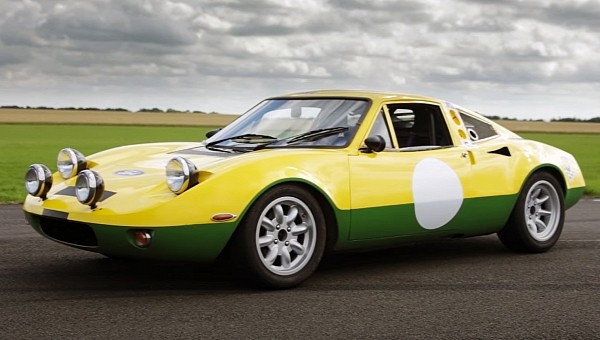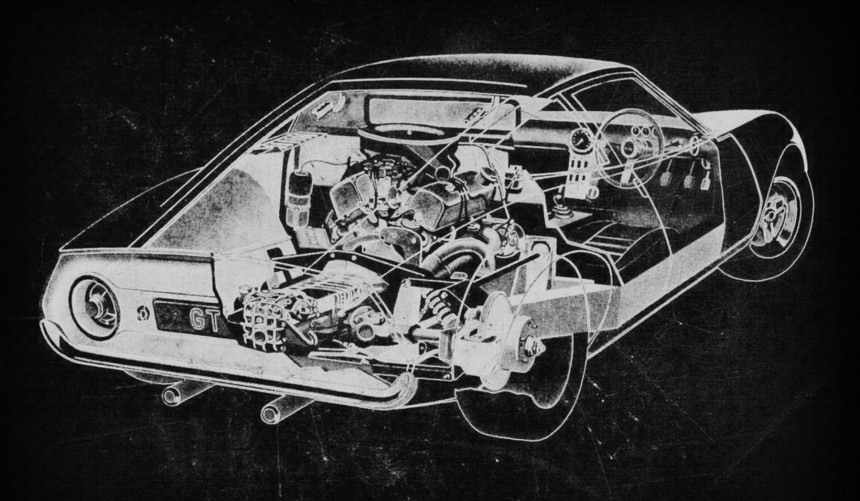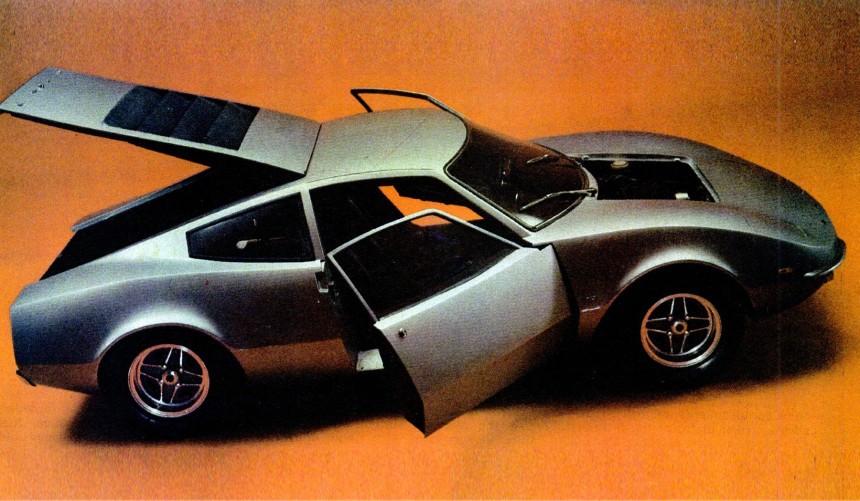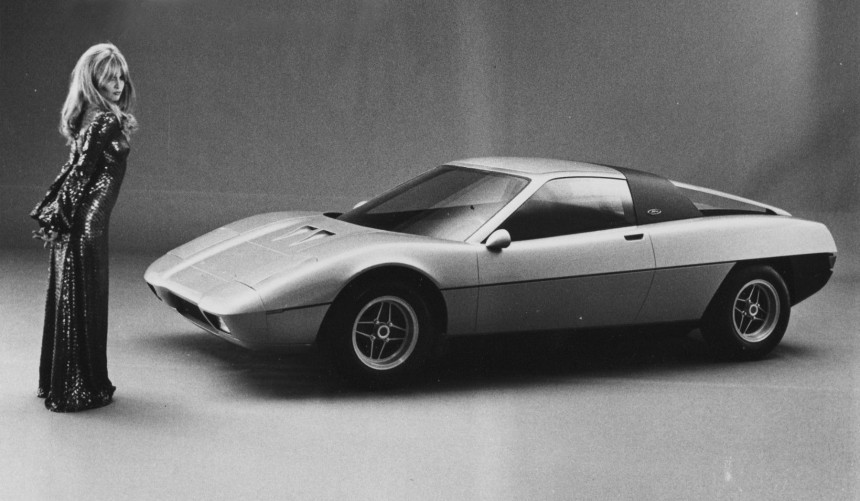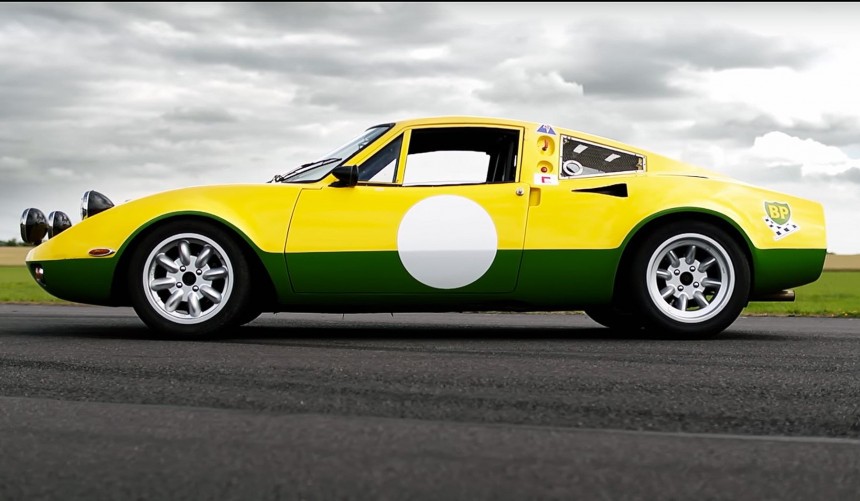We all heard about the mighty Le Mans-winning GT40, which is still one of the most legendary vehicles ever built by Ford nearly six decades after it first took to the track. However, its smaller European sibling dubbed GT70 that briefly competed in rallying during the early 1970s has been completely forgotten.
During the early-1960s, the folks at Ford had little to no interest in endurance racing, a form of motorsport that was widely popular at the time, predominantly in Europe. But the automotive giants had a lot of interest in getting their hands on Ferrari which was navigating through murky financial waters.
As many of you know by now, thanks to the huge number of articles that have been written about the subject and the Hollywood blockbuster Ford vs. Ferrari, it all backfired spectacularly. A Ford delegation flew to Maranello to seal the deal, but it turned out that Enzo Ferrari never intended to sell his beloved brand to the Americans and used the opportunity to get a better deal from Fiat.
Angered by Enzo’s dirty play, Hank the Deuce (Henry Ford II) focused the company’s efforts on the development of a race car that could end Ferrari’s dominance in endurance racing and beat the Italians at Le Mans, the most famous endurance race of them all.
The project gave birth to the GT40 which debuted in 1964. It had a rough start plagued by reliability issues, but with the help of engineering legends like Carroll Shelby, it became Ford’s most successful race car. From 1966 to 1969, it grabbed four titles in FIA’s premier endurance racing competitions and four consecutive victories at Le Mans.
Apart from endurance racing, rallying was also a popular form of motorsport on the old continent during the 1960s. Ford’s European division was heavily involved, recording several positive results with its Lotus-powered Escort Twin-Cam. For the 1970 season, a new rally competition called FIA International Championship for Manufacturers (IMC) was set to debut and although the Blue Oval’s rally team headquartered in the UK was developing a new Cosworth-powered Escort (RS1600), it started the season with the obsolete Twin-Cam.
In the IMC’s maiden event, the famous Monte Carlo rally, Ford’s lead driver Roger Clark struggled against the 911 S and the A110, finishing 5th overall. On the way back to England, Clark and team boss Stuart Turner began discussing the possibility of developing an all-new car, fearing that the upcoming RS1600 wouldn’t be good enough to dominate the competition.
The two theorized that the team needed the rally equivalent of the GT40. Once they got back to England, they put their ideas for a mid-engine, two-seat rally weapon on paper and, with the help of Ford Public Affairs vice president, Walter Hayes, convinced management to greenlight the project which was eventually codenamed GT70.
To build an IMC winner, Turner “borrowed’ British engineer Len Bailey for Ford’s headquarters in Dearborn, Michigan. A key member of both the Mustang Mach 2 and GT40 projects, Bailey was one of the corporation’s mid-engine experts, so as soon as he arrived in England at Ford’s newly-opened Advanced Vehicles Operations facility during the spring of 1970, he began developing the chassis. However, unlike the previous projects he was involved in, Bailey was on a tight budget, so he had to make do with as many existing Ford ports as possible.
The chassis was a custom steel structure designed to offer a good balance between weight and rigidity. It used suspension components from the Taunus and Cortina while the brakes which used rotors and four-piston calipers came from the Mark IV Zephyr. In the middle of the chassis, Bailey placed a 2.6-liter Cologne V6 shared with the performance version of the Mustang’s European sibling – the Capri RS2600. Equipped with Kugelfischer fuel injection and revised aluminum heads, the naturally-aspirated engine could reportedly make close to 250 hp (253 PS) in rally-spec. It was mated to the only part shared with the GT40 – a ZF five-speed transaxle used in the Mk I.
The GT70’s body was made entirely out of fiberglass. It was designed by Ercole Spada, the former Zagato chief stylist who had recently joined Ghia, the Italian coachbuilders who were taken over by Ford. It featured a simple cockpit (by today’s standards) that was put together with valuable input from rally drivers Roger Clark, Hannu Mikkola, and Timo Makinen.
Although it was developed for rallying, Ford planned to produce at least 500 road-legal examples to gain homologation for the IMC. Therefore, the team built three prototypes by late-1970, two of which were roadgoing versions that were shown to the general public at the Brussels and Turin motor shows in 1971. The Brussels car had an Ercole Spada-designed body, similar to that of the rally prototype. The only notable difference was a set of pop-up headlights and a V6 toned down to 148 hp (150 PS). The second show car revealed in Turin had a thoroughly-reworked body designed by Filippo Sapino.
After the unveiling of the road-going prototypes, the rally version was put to the test in France, at the Ronde Cevenole Rally. Driven by Roger Clark it suffered multiple issues that prevented it from being competitive. A second rally-spec GT70 was finished in the months that followed, taking part in Tour de France Automobile. With Francois Mazet behind the wheel and current FIA boss, Jean Todt handling co-pilot duties, the car showed a lot of promise and was on course to win the event, but a collision with a wall that ran along a bridge prevented it from finishing.
The third rally car that the team had completed was delivered to Ford France in 1972. Unlike the other GT70s, this one was modified by the subsidiary’s work team. It ran with a 1.6-liter Cosworth BDA four-pot linked to a Hewland five-speed in the 1972 and 1973 French tarmac championships where it proved competitive.
Because of the reliability issues of the rally cars and Ford USA’s demands for no less than 100 changes to the road-legal prototype, the project dragged on into 1973. By this time, the development team was well over budget and the Escort rally car showed more promise. Therefore, Ford Europe put an end to the GT70 project and decided to run in the inaugural World Rally Championship (WRC) season with the Escort RS1600.
In total, Ford Europe’s Advanced Vehicles Operations department built six GT70s at their facility in Essex, England. Only the Brussels prototype and the rally version delivered to Ford France in 1972 are known to have survived. The second underwent a thorough restoration in 2002, receiving a 200-hp (203 PS), 2.0-liter Cosworth BDA engine and a period-correct Hewland gearbox. It’s featured in the YouTube video below by Carfection, together with the GT40 and the modern GT.
Although it was ultimately a failure, the GT70 remains one of Ford Europe’s most fascinating projects. If it had been developed earlier, preferably alongside the GT40 with a larger budget on hand, it could have become a rally legend and street-legal, mid-engine icon.
As many of you know by now, thanks to the huge number of articles that have been written about the subject and the Hollywood blockbuster Ford vs. Ferrari, it all backfired spectacularly. A Ford delegation flew to Maranello to seal the deal, but it turned out that Enzo Ferrari never intended to sell his beloved brand to the Americans and used the opportunity to get a better deal from Fiat.
Angered by Enzo’s dirty play, Hank the Deuce (Henry Ford II) focused the company’s efforts on the development of a race car that could end Ferrari’s dominance in endurance racing and beat the Italians at Le Mans, the most famous endurance race of them all.
The project gave birth to the GT40 which debuted in 1964. It had a rough start plagued by reliability issues, but with the help of engineering legends like Carroll Shelby, it became Ford’s most successful race car. From 1966 to 1969, it grabbed four titles in FIA’s premier endurance racing competitions and four consecutive victories at Le Mans.
The initial idea: a rally equivalent of the GT40
In the IMC’s maiden event, the famous Monte Carlo rally, Ford’s lead driver Roger Clark struggled against the 911 S and the A110, finishing 5th overall. On the way back to England, Clark and team boss Stuart Turner began discussing the possibility of developing an all-new car, fearing that the upcoming RS1600 wouldn’t be good enough to dominate the competition.
The two theorized that the team needed the rally equivalent of the GT40. Once they got back to England, they put their ideas for a mid-engine, two-seat rally weapon on paper and, with the help of Ford Public Affairs vice president, Walter Hayes, convinced management to greenlight the project which was eventually codenamed GT70.
Building the GT70
The chassis was a custom steel structure designed to offer a good balance between weight and rigidity. It used suspension components from the Taunus and Cortina while the brakes which used rotors and four-piston calipers came from the Mark IV Zephyr. In the middle of the chassis, Bailey placed a 2.6-liter Cologne V6 shared with the performance version of the Mustang’s European sibling – the Capri RS2600. Equipped with Kugelfischer fuel injection and revised aluminum heads, the naturally-aspirated engine could reportedly make close to 250 hp (253 PS) in rally-spec. It was mated to the only part shared with the GT40 – a ZF five-speed transaxle used in the Mk I.
The GT70’s body was made entirely out of fiberglass. It was designed by Ercole Spada, the former Zagato chief stylist who had recently joined Ghia, the Italian coachbuilders who were taken over by Ford. It featured a simple cockpit (by today’s standards) that was put together with valuable input from rally drivers Roger Clark, Hannu Mikkola, and Timo Makinen.
Production plans and a short-lived rally career
After the unveiling of the road-going prototypes, the rally version was put to the test in France, at the Ronde Cevenole Rally. Driven by Roger Clark it suffered multiple issues that prevented it from being competitive. A second rally-spec GT70 was finished in the months that followed, taking part in Tour de France Automobile. With Francois Mazet behind the wheel and current FIA boss, Jean Todt handling co-pilot duties, the car showed a lot of promise and was on course to win the event, but a collision with a wall that ran along a bridge prevented it from finishing.
The third rally car that the team had completed was delivered to Ford France in 1972. Unlike the other GT70s, this one was modified by the subsidiary’s work team. It ran with a 1.6-liter Cosworth BDA four-pot linked to a Hewland five-speed in the 1972 and 1973 French tarmac championships where it proved competitive.
A sand ending
In total, Ford Europe’s Advanced Vehicles Operations department built six GT70s at their facility in Essex, England. Only the Brussels prototype and the rally version delivered to Ford France in 1972 are known to have survived. The second underwent a thorough restoration in 2002, receiving a 200-hp (203 PS), 2.0-liter Cosworth BDA engine and a period-correct Hewland gearbox. It’s featured in the YouTube video below by Carfection, together with the GT40 and the modern GT.
Although it was ultimately a failure, the GT70 remains one of Ford Europe’s most fascinating projects. If it had been developed earlier, preferably alongside the GT40 with a larger budget on hand, it could have become a rally legend and street-legal, mid-engine icon.
